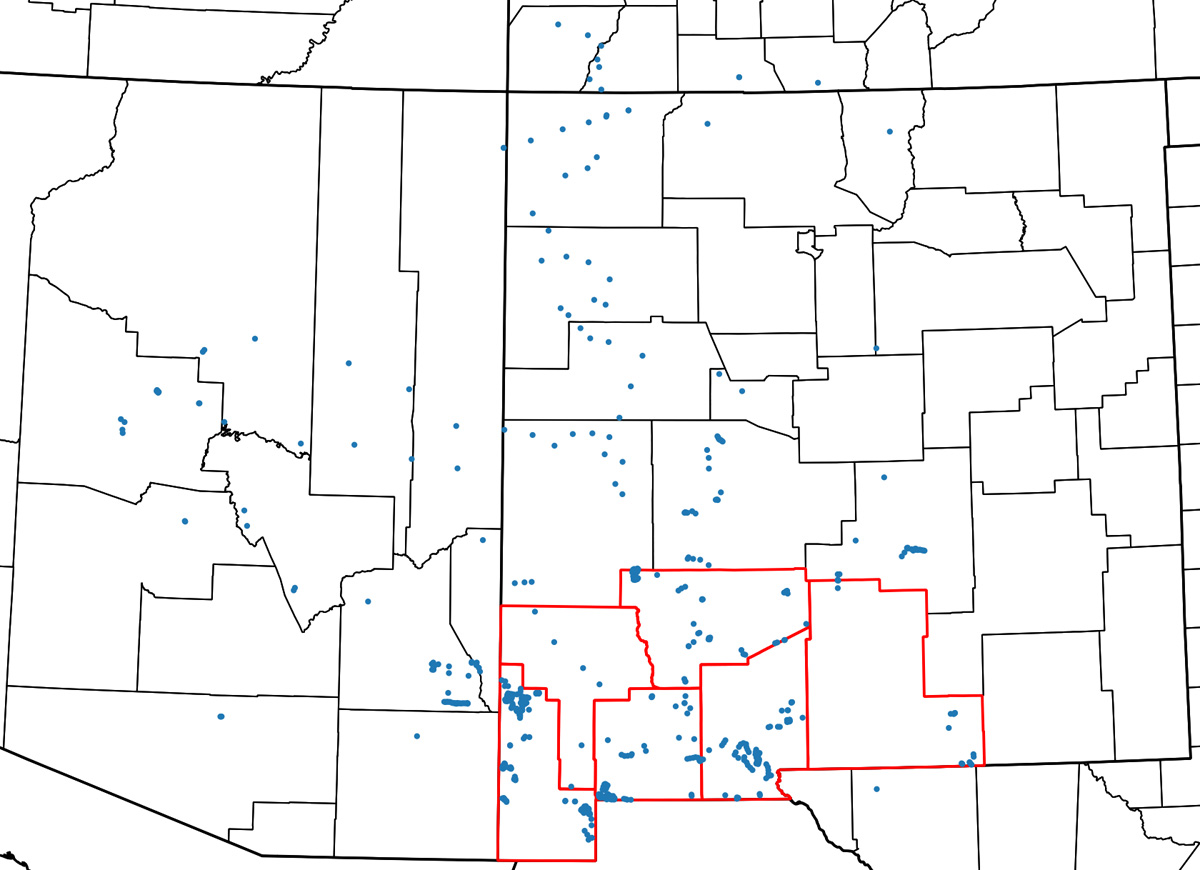The Militarization of Public Lands
Recently, I’ve been going down the proverbial NEPA rabbit hole, trying to track down adequate documentation for an RMP/EA I’m working on for a seed grow out facility. It’s taught me a lot about being organized, which EVERYONE should make an effort to be, but also the BLM’s policy of multiple use, the concept of public lands, the Department of Defense/Homeland Security, and how they are tied together. I’ve been ruminating on these somewhat unrelated topics because the particular project I’m working on is located adjacent to BLM lands which are used for military training purposes. Ironically enough, the area is a designated Area of Critical Environmental Concern. Learning this, I thought a fissure would open up in the earth, and the apocalypse would commence! But, militarization of public lands, outside of mere training use, regardless of any special designation is not a new concept.
Over the last nearly 20 years, the Department of Homeland Security has been in direct conflict with both the Department of Interior and Agriculture, and there has been an overwhelming lack of communication between all three (Bruno 2012). Between 1996 and 2006, there have been several efforts to open communication lines, but also to undermine the foundational missions of the Bureau of Land Management and the U.S. Forest Service to protect, enhance and repair lands under their jurisdiction while balancing for multiple use and economic opportunity. This has ultimately been accomplished via legislation and a gross imbalance of power between the Departments and waiver of environmental policy for the sake of national security. These policies are in addition to sequester under which the BLM specifically, will undergo 5% budget cuts over the next three years (2013-2016). Activities related to species protection, fuels treatments, etc are directly jeopardized from lack of funds, only to be further degraded or endangered by military or customs activity.
In 2012, HR 1505 – the National Security and Federal Lands Protection Act was passed to give U.S. Customs and Border Patrol greater control over activities pertaining to national security. What this ultimately means, is they are exempt from rules and regulations set forth by various environmental acts (i.e. Endangered Species Act) and the policies of the Departments of Interior/Agriculture for preservation and enjoyment of our public lands. This particular policy is to remove the “hindrance” of environmental legislation which would otherwise prevent enforcement of border security. In reality, with the exception of a few circumstances, the Government Accountability Office could find no direct correlation between environmental law and prevention of border security (Clifford 2012).
HR 1505 is tiered to HR 6061 and HR 5124 – the Secure Fence Act of 2006 and the Reinstatement of the Secure Fence Act of 2008. The 2006 act provides for the construction of the border fence and greater infrastructure to support Customs and Border Patrol activity. The 2008 act called for an additional 700 miles of fence to be constructed. To date, there are 670 miles of fence, which cost $2.4 billion, with another 700 slated for the next few years and augmentations to the current fence effectively “doubling” it (NBC News 2013). Furthermore, these acts extend the jurisdiction of Customs and Border Patrol 100 miles inland. Keep in mind, the US border with Mexico is 1989 miles (U.S. Customs and Border Protection 2013)…
Similar legislation, includes the acquisition of public lands for military use. Occasionally, various military installations claim eminent domain, and acquire vast tracks of land. One such example includes Pinion Canyon Maneuver Site near Trinidad, Colorado which was expanded to 285,000 acres in 1983 which forced dozens of landowners out. There have been additional movements to expand the site to be larger than the state of Maryland in recent years. The area borders the Comanche National Grasslands and the Historic Santa Fe Trail, in addition to harboring innumerable petroglyphs, homesteads and economically important big game. More recently, there has been a push by the installation to acquire an additional 418,000 acres (Garrison 2008), again to the detriment of local ranchers, but there was a much stronger more unified resistance. Legislation was passed which prohibited the expansion of the site into the future.
This narrative is obviously only one side of the story, and I’m sure that I’ve missed things. I think the take away is that we need to repair our relationship with the land and the stewards of it, whether that is the Department of Defense, the BLM or ranchers. Furthermore, start locally and juxtapose how those actions will ripple globally. We’ve lost sight of the big picture in exchange for panicked, immediate action. These desert systems are especially delicate, which we generally neglect. The sheer number of military installations in the desert and the weapons testing that occurs (i.e. the Nevada Test Site, Los Alamos, White Sands Missile Range), in my mind, demonstrates that we as a society hold the ecosystem in poor regard. We believe that they are “inhospitable to human life (and therefore) we have treated them as if they had no life of their own (Clifford 2012).” With that, I’ll leave you all with a thought from Luna Leopold, Aldo Leopold’s son; “things wild and free are being destroyed by the impersonality of our attitude toward the land (1966).”
Please excuse the lack of a proper bibliography – but feel free to peruse sources via the links.
http://usnews.nbcnews.com/_news/2013/06/21/19062298-price-tag-for-700-miles-of-border-fencing-high-and-hard-to-pin-down
http://onlinelibrary.wiley.com/doi/10.1111/j.1523-1739.2009.01277.x/abstract?deniedAccessCustomisedMessage=&userIsAuthenticated=false
http://prospect.org/article/border-effect
https://help.cbp.gov/app/answers/detail/a_id/578/~/border-in-miles
https://lajicarita.wordpress.com/2014/05/26/the-militarization-of-everything-new-mexican-including-our-forests/
http://www.law.umaryland.edu/marshall/crsreports/crsdocuments/R42036_08242011.pdf
Emil B. McCain and Jack L. Childs (2008) Evidence of Resident Jaguars (Panthera onca) in the Southwestern United States and the Implications for Conservation. Journal of Mammalogy: February 2008, Vol. 89, No. 1, pp. 1-10.
Sand County Almanac
http://www.washingtonpost.com/blogs/post-politics/wp/2014/12/09/whats-in-the-spending-bill-we-skim-it-so-you-dont-have-to/
http://www.americancowboy.com/article/sale-25944
http://www.landreport.com/2008/12/pinon-canyon-one-colossal-land-grab/
http://www.csindy.com/coloradosprings/fort-carson-comes-under-fire-andmdash-again-andmdash-for-damaging-piandntildeon-canyon-maneuver-site/Content?oid=2690142







![IMG_20141203_093504796[1]](https://dev-clm-blog.pantheonsite.io/wp-content/uploads/2014/12/IMG_20141203_0935047961-300x168.jpg)
![IMG_20141203_163336954[1]](https://dev-clm-blog.pantheonsite.io/wp-content/uploads/2014/12/IMG_20141203_1633369541-300x54.jpg)
![IMG_20141121_115649249[1]](https://dev-clm-blog.pantheonsite.io/wp-content/uploads/2014/12/IMG_20141121_1156492491-300x168.jpg)
![IMG_20141202_161035662[1]](https://dev-clm-blog.pantheonsite.io/wp-content/uploads/2014/12/IMG_20141202_1610356621-300x168.jpg)